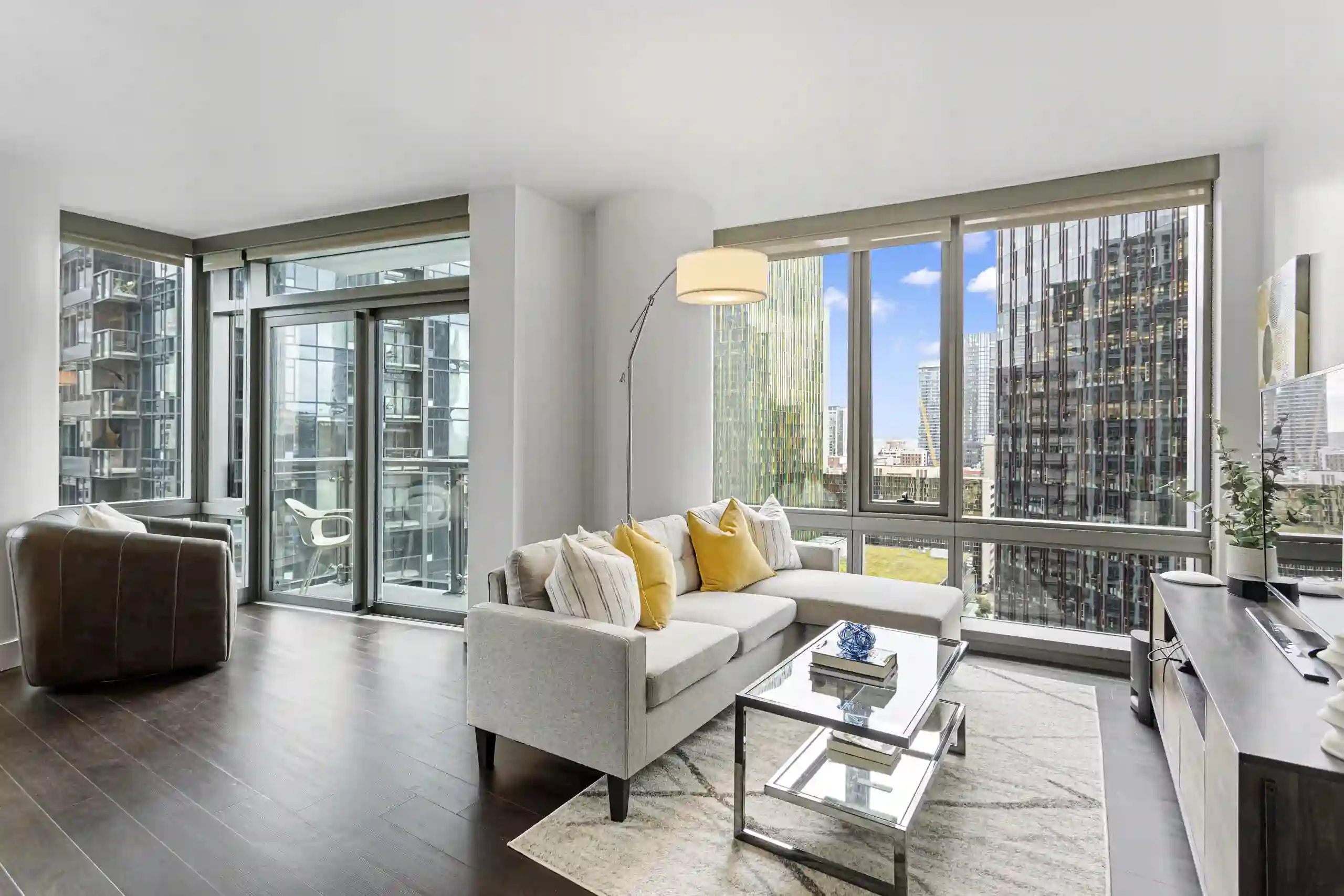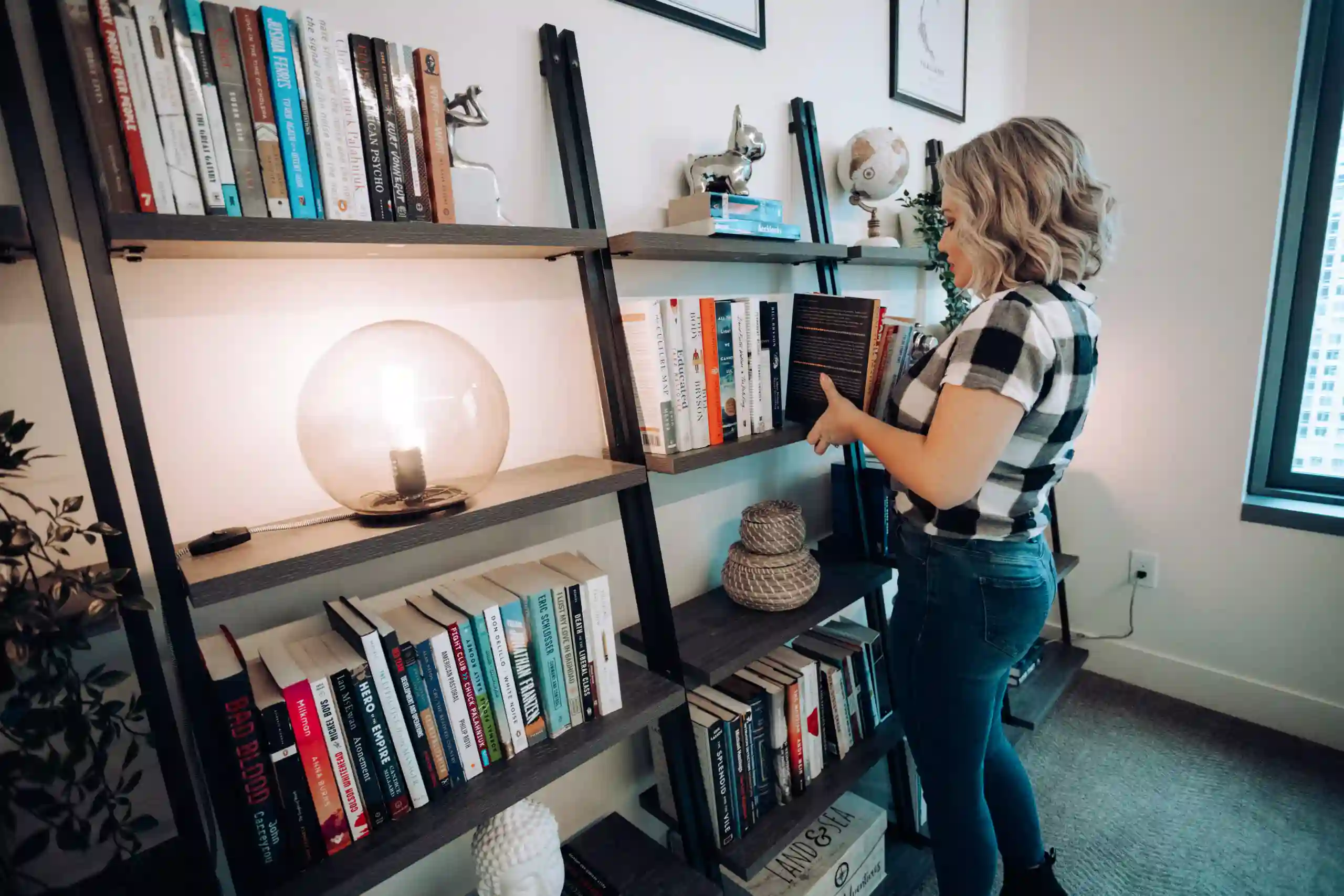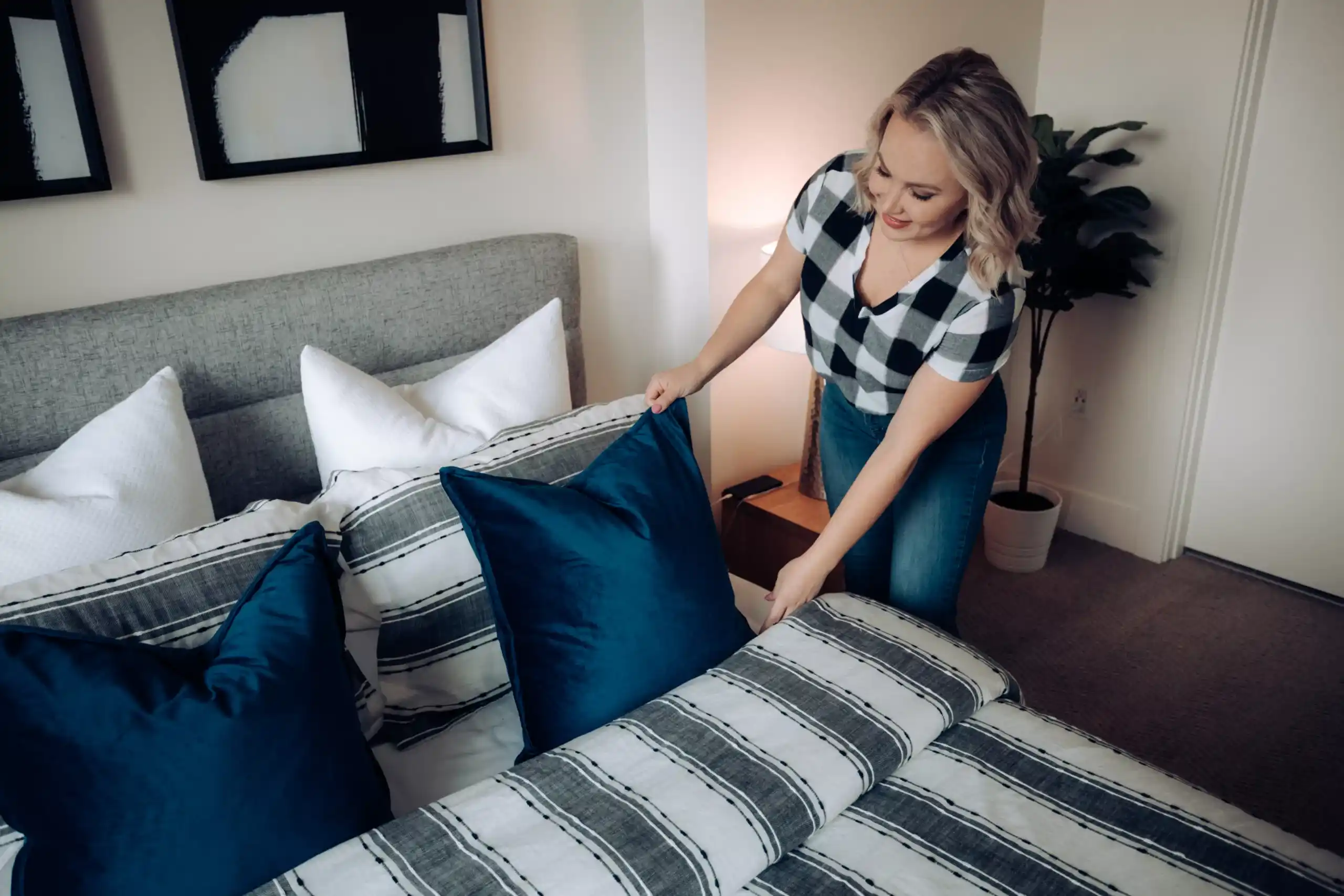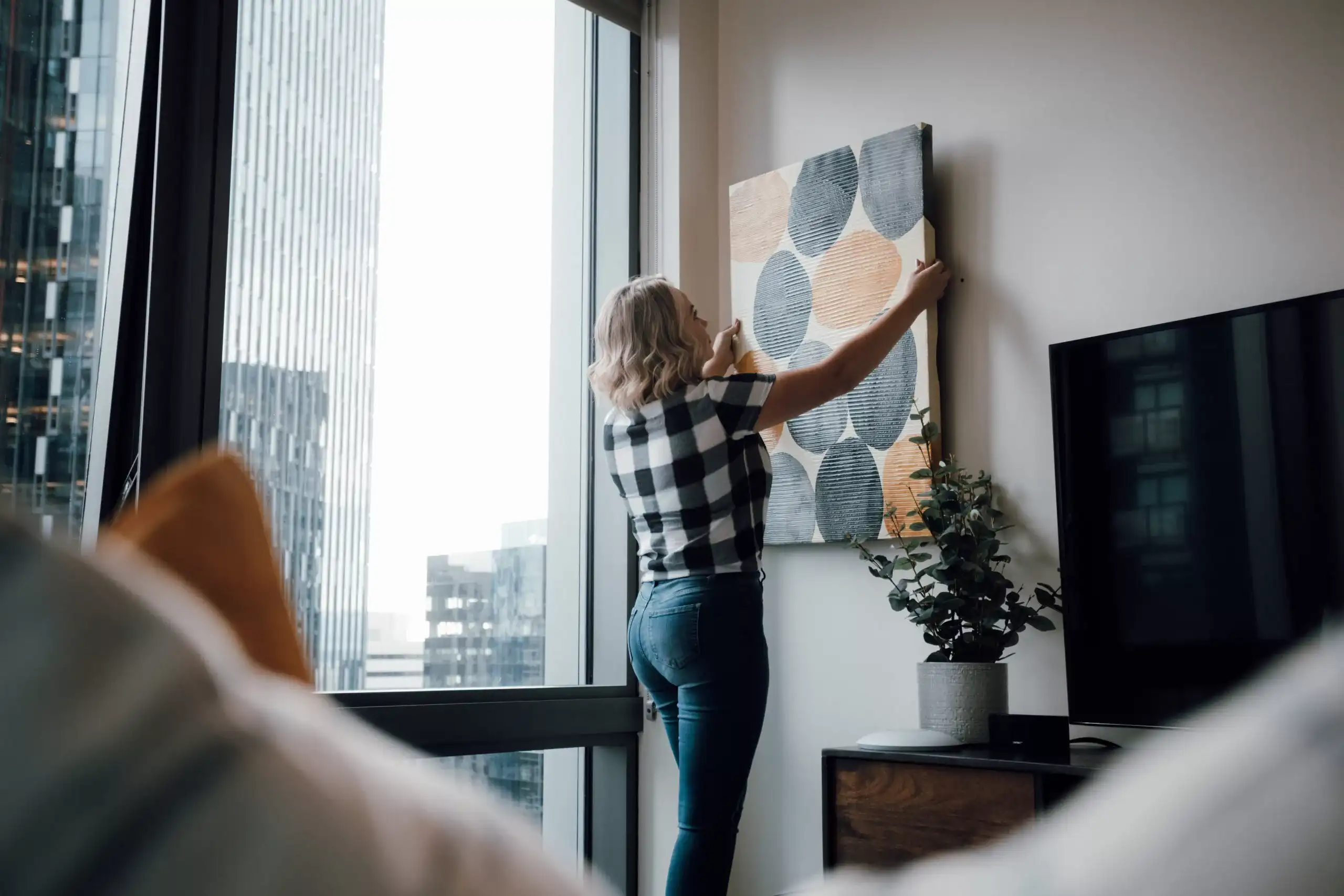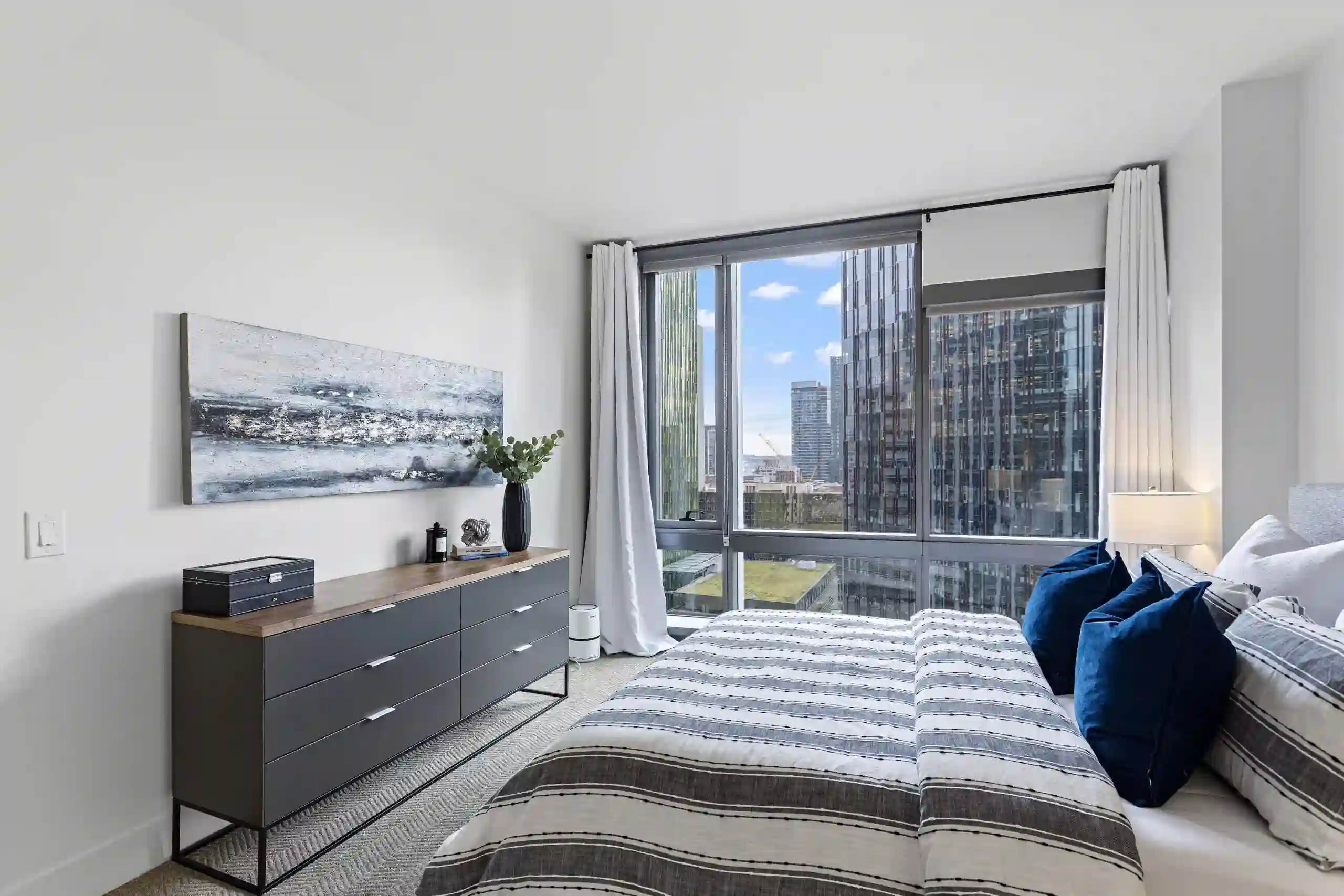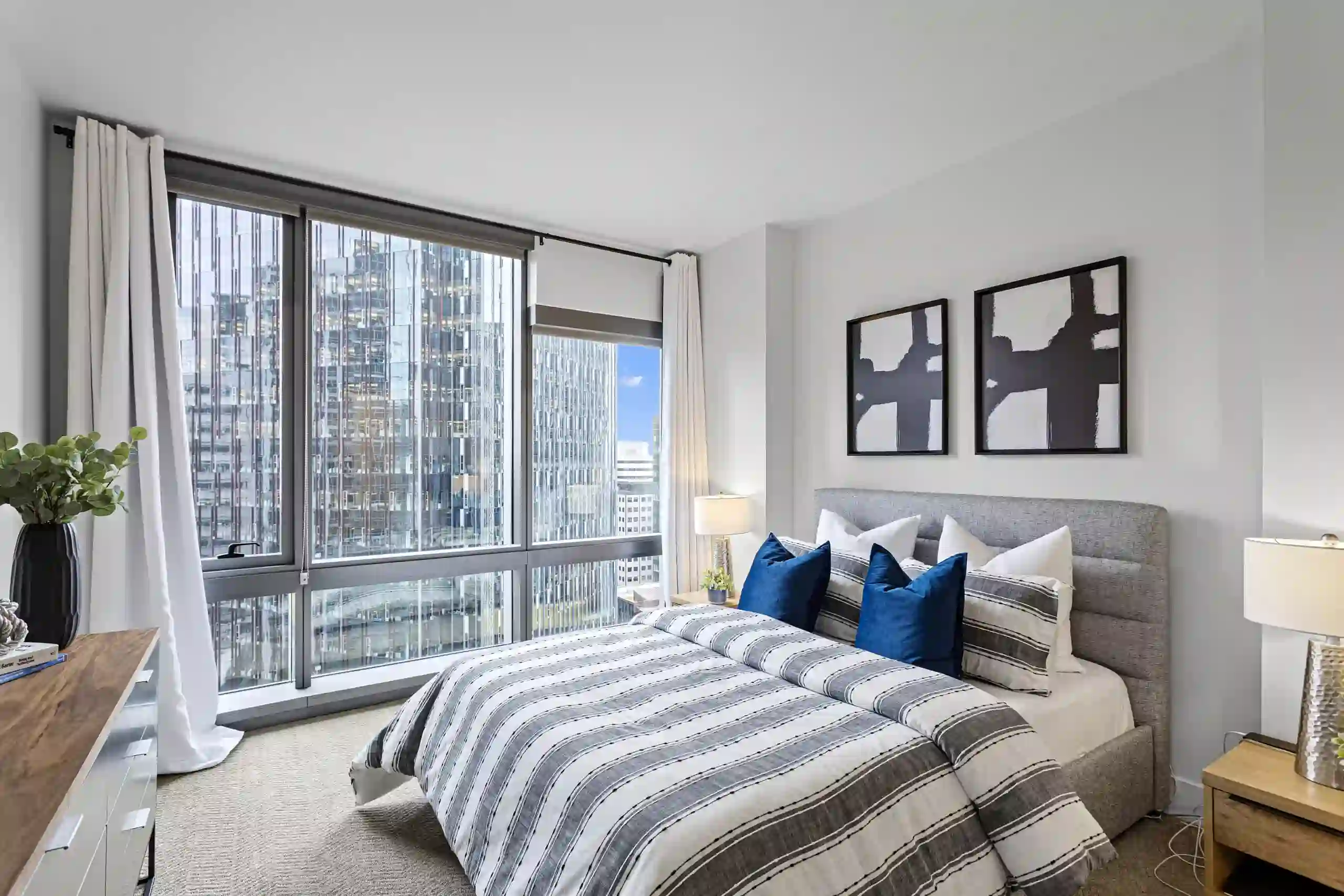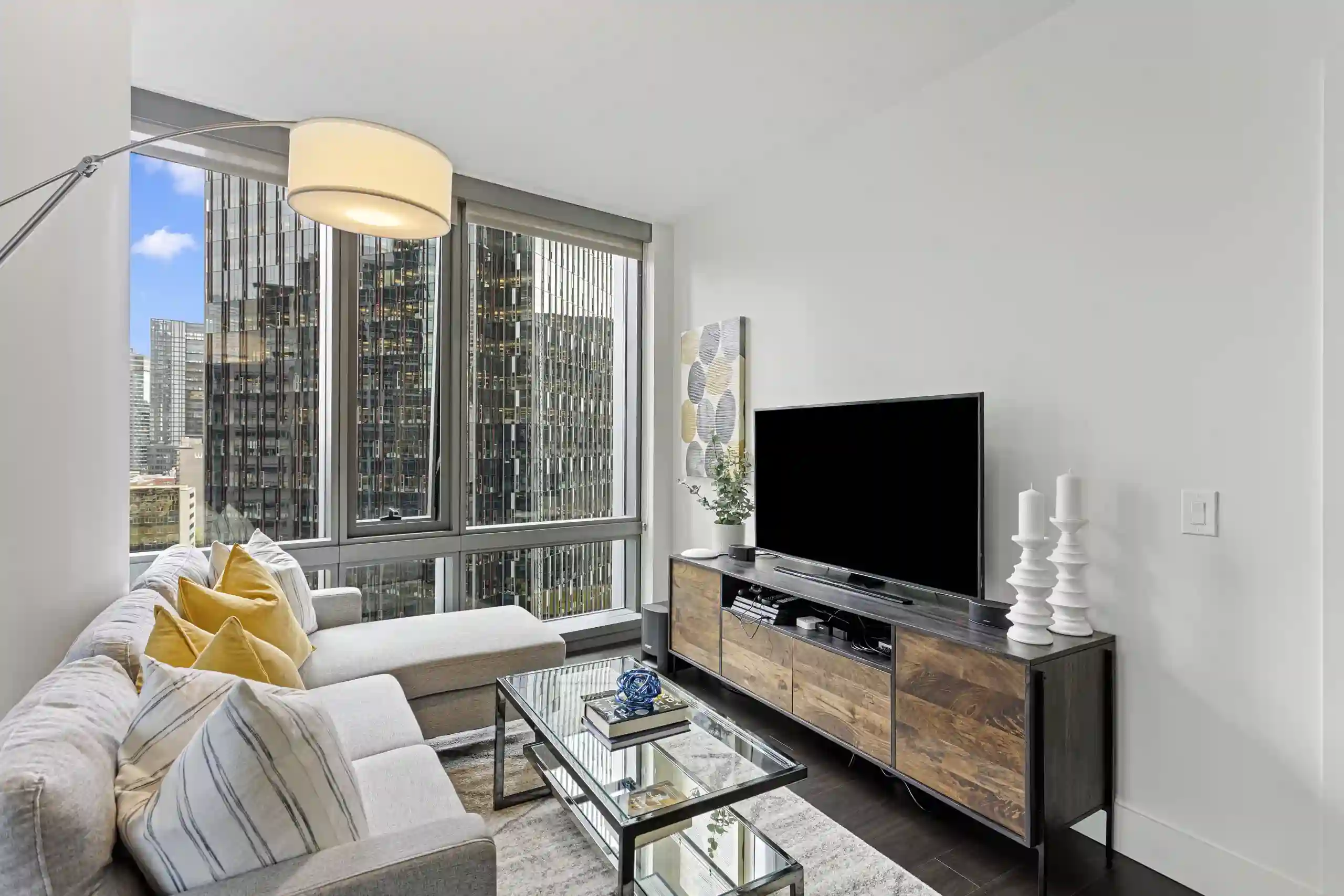Real Estate Staging Power: Transform Your Property to Sell Faster & for Top Dollar
Selling a property can be daunting, especially in a competitive market. Real estate staging is one of the most effective ways to stand out and attract potential buyers. Staging transforms a property into a visually appealing and functional space that highlights its best features and maximizes its potential. Home staging has numerous benefits, from faster sales to higher selling prices.
In this blog, we’ll explore the power of real estate staging and provide tips on transforming your property to sell faster and for top dollar.
Real Estate Staging Benefits
Staging real estate has become an essential component of the home selling process, and for a good reason. It involves strategically placing furniture, accessories, and decor to create a welcoming and aesthetically pleasing environment that resonates with potential buyers. Not only does staging improve a property’s appearance, but it can also significantly impact its sale price and time on the market.
This section will explore the many benefits, including how it can help you sell your home faster and for more money.
Boosting Property Appeal and Attracting Buyers
Staging can highlight a property’s best features and create a welcoming and inviting environment by strategically placing furniture, accessories, and decor.
Real estate staging helps potential buyers envision living in the space and increases their interest in the property. In addition, staging can make a property stand out in a competitive market, leading to faster sales and higher selling prices.
By investing in real estate staging, sellers can enhance their property’s appeal and attract more potential buyers, ultimately leading to a successful and profitable sale.
Increasing Property Value
Real estate staging is beneficial in attracting potential buyers and can increase a property’s value. Staging can significantly enhance a home’s perceived value by showcasing a property’s best features and maximizing its potential.
This service can lead to higher appraisals and sales, resulting in a more profitable sale. In addition, staging can create a memorable and lasting impression on potential buyers, increasing the likelihood of them making an offer.
By investing in real estate staging, sellers can attract more potential buyers and increase the value of their property, resulting in a successful and profitable sale.
Selling Properties Faster

Sellers can increase their chances of selling their property quickly and efficiently by investing in real estate staging. By creating a visually appealing and inviting space, staging can make a property stand out in a competitive market and attract potential buyers quickly.
It can also help buyers envision themselves living in the space, leading to a quicker decision to make an offer.
In addition, staged properties are often viewed as move-in ready, eliminating the need for potential buyers to make cosmetic upgrades or renovations, which can further speed up the sales process.
Maximizing Return on Investment
Real estate home staging is a valuable tool for maximizing the return on investment when selling a property. By enhancing a property’s appeal, staging can lead to faster sales and higher selling prices, ultimately resulting in a more profitable sale.
Furthermore, staging can often be done at a relatively low cost, making it an intelligent investment for sellers.
By highlighting a property’s best features and maximizing its potential, staging can create a memorable and lasting impression on prospective buyers, leading to a successful sale. By investing in real estate staging, sellers can maximize the return on their investment and achieve their desired selling price.
The Psychology of Real Estate Staging
The psychology of real estate staging is a fascinating topic exploring how our environment can impact our thoughts, feelings, and behaviors. Staging can significantly impact how potential buyers perceive and connect with a space when selling a property.
By creating a visually appealing and inviting environment, staging can evoke positive emotions in potential buyers, leading to a quicker decision to make an offer.
In this section, we’ll explore the psychology behind real estate staging, including how it can influence a buyer’s perception of a property and the benefits of using staging to create a welcoming and emotionally appealing space.
Understanding Buyer Behavior
Understanding buyer behavior is essential when selling a property. Buyers have specific needs, wants, and preferences when searching for a new home, and it’s vital to consider these factors when marketing and staging a property.
Some buyers prioritize location, while others focus on the number of bedrooms or the space layout.
By understanding buyer behavior, sellers can tailor their marketing and staging efforts to appeal to potential buyers’ specific needs and preferences, ultimately leading to a quicker sale.
This process includes creating a welcoming and emotionally appealing environment to help potential buyers envision themselves living in the space.
Creating Emotional Connections

Creating emotional connections with potential buyers is essential to selling a home. Buyers are often looking for more than just a physical space; they want to feel a connection to the property and envision themselves living in it.
Real estate staging can create emotional connections with potential buyers by showcasing a property’s best features and creating a welcoming and inviting environment.
By using colors, lighting, and decor to create a specific mood, staging can evoke positive emotions in potential buyers, leading to a quicker decision to make an offer. By creating emotional connections through real estate staging, sellers can significantly increase their chances of a successful and profitable sale.
Fostering a Sense of Home
Fostering a sense of home is critical to real estate staging when selling a property. Buyers are looking for a space to feel comfortable and at ease; staging can help create that sense of home.
By using furniture, decor, and lighting to create a warm and welcoming environment, staging can help potential buyers envision living in the space.
The process includes the following:
- Creating cozy seating areas.
- Highlighting functional spaces like kitchens and bathrooms.
- Using soft textures and fabrics to create comfort.
By fostering a sense of home through real estate staging, sellers can increase the emotional appeal of their property and attract more potential buyers.
The Real Estate Staging Techniques

Real estate staging techniques are essential for sellers looking to showcase their property’s best features and attract potential buyers. Staging can significantly impact how buyers perceive and connect with a property, from using furniture and decor to create a welcoming and inviting environment to highlighting functional spaces like kitchens and bathrooms.
Let’s explore some of the most effective real estate staging techniques, including creating emotional connections with potential buyers, fostering a sense of home, and increasing a property’s perceived value.
Furniture Placement and Selection
Furniture placement and selection are crucial elements of real estate staging that can significantly impact how buyers perceive and connect with a property.
Sellers can highlight a room’s best features by strategically placing furniture, creating flow and balance, and showcasing how you can utilize the space. The selection of furniture is also essential, as it can influence the style and mood of a room.
For example, contemporary furnishings can create a modern and sleek look, while traditional furniture can evoke a sense of warmth and comfort. Using furniture placement and selection to create an appealing and functional environment, sellers can increase their chances of a successful sale.
Lighting
Lighting is a powerful tool in real estate staging that can significantly impact how a space looks and feels. By using different types of lighting, such as natural light, overhead lighting, and accent lighting, sellers can create a mood and highlight specific features of a property.
For example, highlighting a focal point like a fireplace or artwork with accent lighting can draw potential buyers’ attention and create a sense of interest in the space.
Additionally, natural light can create a warm and inviting atmosphere, while overhead lighting can provide functional lighting for everyday use. By using lighting as a real estate staging technique, sellers can increase the perceived value of a property and attract potential buyers.
Color Schemes
Color schemes are a crucial element of real estate staging that can significantly impact how buyers perceive and connect with a property.
By using a carefully selected color palette, sellers can create a mood, evoke emotions, and highlight specific features of a space. For example, warm and neutral tones like beige and cream can create a sense of comfort and relaxation, while pops of bold colors like red or blue can add visual interest and create a focal point in a room.
Using color schemes can help sellers create a cohesive and visually appealing environment that attracts potential buyers and increases the perceived value of a property.
Decluttering and Depersonalizing
Decluttering and depersonalizing a space are real estate staging techniques that can significantly impact buyers’ perception of a property. Cluttered and personalized areas can make it difficult for prospective buyers to visualize themselves living in the space.
By removing excess clutter and personal items, sellers can create a clean and neutral environment that allows buyers to focus on the space’s potential.
These steps include removing family photos, clearing countertops, and removing excess furniture. By decluttering and depersonalizing a space, sellers can increase the perceived value of a property and help potential buyers imagine living in the house.
Curb Appeal
Curb appeal is an essential real estate staging technique that can make a lasting first impression on potential buyers. It includes enhancing the exterior of a property to make it more appealing and inviting.
Enhancement can involve landscaping, exterior lighting, and repainting the front door or shutters. A well-maintained and attractive exterior can set the tone for the rest of the property, making it more likely that potential buyers will be interested in seeing the inside.
By using curb appeal as a real estate staging technique, sellers can increase the perceived value of a property and attract potential buyers who may not have considered it otherwise.
Tips for Effective Real Estate Staging
Effective real estate staging is essential for successfully selling a property. From decluttering and depersonalizing to enhancing curb appeal, real estate staging techniques can significantly impact a buyer’s perception of a property.
By strategically arranging and decorating a space, sellers can create a welcoming and attractive environment that resonates with potential buyers.
To help sellers achieve the best possible results, there are several tips and tricks for effective real estate staging. By implementing these tips, sellers can increase the perceived value of a property, attract potential buyers, and ultimately achieve a successful sale.
Identify the Target Market
Identifying the target market is a crucial tip for effective real estate staging. By understanding the preferences and needs of potential buyers, sellers can create a space that resonates with them and increases the property’s perceived value.
Research the local real estate market, identify local trends and preferences, and analyze the area’s demographics. By tailoring the staging to the target market, sellers can increase the likelihood of attracting potential buyers and achieving a successful sale.
For example, suppose the target market is young families. In that case, sellers may want to highlight the property’s potential for creating a family-friendly environment, such as showcasing a large backyard or a playroom.
Work with a Professional Stager
Working with a professional stager is a valuable tip for effective real estate staging. Professional stagers have the expertise and experience to transform a space into an attractive, inviting environment that resonates with potential buyers.
Professional Stagers can provide valuable insights and recommendations for furniture placement, color schemes, and decor to enhance a property’s perceived value.
A professional stager can also bring furniture, accessories, and artwork that creates a cohesive and visually appealing environment. By working with a professional stager, sellers can ensure that their property is presented in the best possible light and stands out in a competitive real estate market.
Showcase the Best Features of the Property
Showcasing a property’s best features is crucial for effective real estate staging. By highlighting a space’s unique and desirable aspects, sellers can increase its perceived value and attract potential buyers.
Emphasize features such as high ceilings, natural lighting, and spacious rooms while minimizing flaws or imperfections.
For example, if a property has a stunning view, sellers may want to arrange furniture to showcase the view and create a focal point in the room. By highlighting a property’s best features, sellers can make a positive impression on potential buyers and increase the likelihood of a successful sale.
Keep it Neutral
Keeping the staging neutral is an essential tip for effective real estate staging. Neutral decor allows potential buyers to envision themselves in the space without being distracted by personal tastes or preferences.
Use a neutral color palette on the walls and furniture, such as whites, beiges, and grays. Also, sellers should remove personal items or clutter that may detract from the space’s appeal.
By keeping the staging neutral, sellers can create a clean, inviting environment that appeals to a broader range of potential buyers. This process increases the likelihood of attracting more offers and achieving a successful sale.
Stay Within Budget
Staying within budget is a critical tip for effective real estate staging. Sellers must balance the investment they make in stage with the potential return on investment from a successful sale.
It’s essential to prioritize improvements that will significantly impact the property’s perceived value and appeal to potential buyers while staying within a reasonable budget. Modifications may involve minor repairs, updating lighting fixtures, or refreshing paint colors.
By being mindful of the budget and focusing on high-impact improvements, sellers can create an attractive and welcoming environment that entices potential buyers while controlling their expenses.
Real Estate Staging Mistakes to Avoid
When selling a home, staging can make all the difference. A well-staged home can attract more potential buyers and lead to a faster sale at a higher price. However, staging is more complex than adding some furniture and decor. Several common staging mistakes can turn off buyers and hurt your chances of selling.
So here are some of the most common real estate staging mistakes to avoid to ensure a successful sale.
Overpersonalizing the Space
Overpersonalizing a space is one of the most common real estate staging mistakes to avoid. While it’s important to add personality to a home to make it feel warm and inviting, it’s equally important not to overdo it.
When a home is too personalized, it can make it difficult for potential buyers to picture themselves living in the space.
Some common examples of over-personalization include family photos, political or religious decor, and excessive use of a favorite color. To avoid this mistake, opt for neutral decor and minimal personalization to appeal to a broader range of buyers.
Neglecting the Exterior
When staging a home, many sellers focus solely on the interior and neglect the exterior. Ignoring a home’s exterior appearance is a major real estate staging mistake to avoid.
A home’s exterior is the first thing potential buyers see, setting the tone for their overall impression of the property. Neglecting the exterior can lead to a lack of interest from buyers and a lower selling price.
To avoid this mistake, ensure the exterior is clean, well-maintained, and inviting. Add potted plants, fresh paint, or new landscaping to enhance curb appeal.
Poor Lighting
Poor lighting is another common real estate staging mistake to avoid. A poorly lit home can appear dark, small, and uninviting, making it difficult for potential buyers to imagine themselves living in the space.
To avoid this mistake, ensure that all rooms have adequate lighting.
Use a mix of overhead, table, and floor lamps to produce a warm and welcoming atmosphere. Additionally, ensure all light fixtures are clean and in good working order to showcase the home in its best light.
Using Poor-Quality Furniture and Decor
Using poor-quality furniture and decor is another real estate staging mistake to avoid. While cutting corners and using inexpensive furnishings may be tempting, this can hurt your chances of selling the home.
Poor-quality furniture and decor can make a home appear cheap and unappealing to potential buyers.
Instead, invest in high-quality pieces that showcase the home’s best features and make the space inviting. This step will help create a positive first impression and increase the likelihood of a successful sale.
Not Staging Every Room
Not staging every room is a common real estate staging mistake to avoid. Some sellers may think that certain rooms, such as a spare bedroom or basement, do not need to be staged because they are not the main living spaces.
However, neglecting to stage these rooms can make the home feel incomplete and leave potential buyers wondering about the potential of these spaces. To avoid this mistake, ensure every room is staged to showcase the home’s full potential and help buyers envision themselves living there.
The Return on Investment of Real Estate Staging
Real estate staging has become an essential part of the home-selling process. It is a strategic method to prepare a home for sale to help buyers envision themselves living in the space. But the real question remains – is real estate staging worth the investment?
Understanding the Costs and Benefits
Before investing in real estate staging, it’s essential to understand the costs and benefits involved. Research has shown that staged homes sell faster and for a higher price in comparison to non-staged homes. However, the cost of staging can vary depending on the size of the house, the location, and the extent of the staging required. Sellers should consider the cost of staging versus the potential return on investment when deciding whether to stage their home.
Staging for Different Property Types
Staging a property can have a significant impact on its selling price and the length of time it spends on the market. Understanding how to stage different types of properties can help sellers maximize their return on investment.
By considering each property type’s unique features and target audience, sellers can effectively stage their homes to appeal to potential buyers and secure a successful sale.
Contact Brilliant Staging Design
If you want to work with real estate staging companies to help showcase your property’s full potential, consider contacting Brilliant Staging Design. With our expertise in staging different types of properties and attention to detail, they can help you maximize your return on investment and ensure a successful sale. Don’t hesitate to contact us today to find out more about the services we offer and how we can help you.



